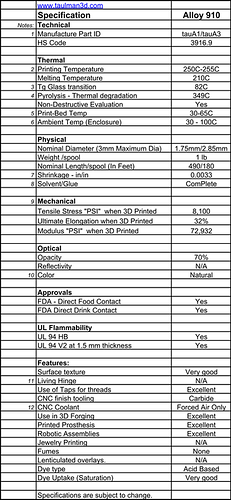I am wondering were people have locally sourced their stainless steel, looking to build the 3/4" version. I have found it online, but none of the bigbox hardware stores stock it locally. Thanks!
You want 3/4” EMT electrical conduit, which is so called by its inside diameter.
Blaine is right if you want 3/4" you need EMT.
Now if you want Stainless Steel you need 1"…I got mine from Metal Depot reasonable price and fast shipping.
Welcome to the “wonderful” world of round, hollow lengths of steel (RHLoS)! Sometimes, they are described based on ID (inner diameter), and sometimes, it’s based on OD (outer diameter).
In general, RHLoS that are “supposed” to have things travelling through them (such as pipes and conduits) are measured by ID, so you know how much crap you can shove through them. RHLoS that are “supposed” to be structural (such as support tubes, furniture legs, etc.) are measured by OD, since that’s the most important information for the architect/designer (although the structural/mechanical engineer will surely want to know the wall thickness or the ID as well).
So, the 3/4" EMT conduit, ‘C’, version is based on a 3/4" ID with a reasonably standardized OD (23.5mm). The 25mm, ‘F’, version is OD for basically everyone outside the US who is using a rational measuring system. Which leaves the 25.4mm, ‘J’, version for 1" OD SS.
‘C’ - Conduit (3/4" ID EMT steel conduit)
‘F’ - Foreign (25mm OD SS tubing)
‘J’ - Jumbo (1" OD SS tubing)
edit: Yes, the .4mm difference between the F and J matters, much less the 1.5mm between the C and F.
I was looking for this exact info. I ended up getting the 3/4" EMT tubing, but they had black steel tubing that I considered as well.
That black “tubing” is actually “pipe”, and the EMT tubing is incorrectly named “tubing” by engineers way smarter than me. 
Tubing= O.D.
Pipe = I.D.
Or more commonly EMT conduit. 
I have been educated on the matters of Pipe, Tubing and Conduit…till i screw it up again.
Honestly didn’t know the difference between Pipe and Tubing. Now i do, thank you.
I knew it was conduit but didn’t think to call it that since I bought eight 5’ ones because I am bad a math.
Thanks for all the reply, yes I was confused, didn’t know there was so much to learn about pipes, tubes inside outside measurements! 3/4" electrical conduit it is then!
I’m to deep in to printing the parts for the 3/4" to start over and print the 1 inch. I’m printing my parts out of nylon 910 and cf petg, expensive reprint!
LOL that is funny! I guess I can relay to that chart even though I’m not canadian…
That chart is 100% accurate, except if it’s a long distance that isn’t work related it’s measured in hours. 
If it shrinks and is as flexible as what i’ve read, nylon might not be the best choice for this. I’ve never tried it so I can’t honestly comment. PLA works great and is so much cheaper.
Well, the T in EMT stands for Tube so…
^ That’s exactly my point. If 3/4” EMT doesn’t measure 3/4” o.d., it should be labeled 3/4” EMP.

It was named by Electricians? Maybe it stands for thin? Yes thing is closer but non plumbers really
Thing?
nylon 910 is not your typical nylon, I don’t use pla for anything structural, its too brittle, I use material that will hold up long term.
PLA works great. Feel free to make it your own, but the parts were designed with PLA in mind.

